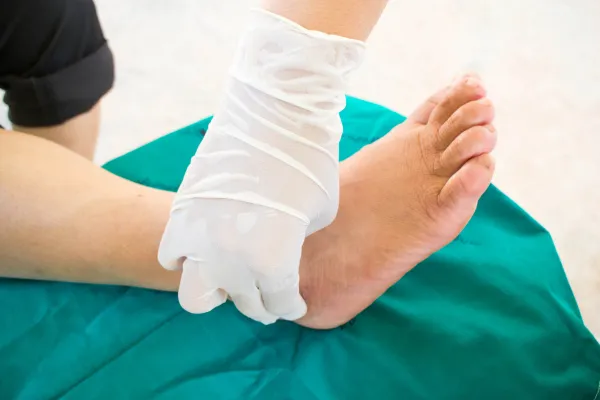
Is It Normal for a Foot Wound to Take Weeks to Heal?
Healing Takes Time... But How Much?
Maybe you scraped your heel. Or you’ve had a sore on your toe that’s just lingering. It’s been a couple of weeks—and you’re starting to wonder:
“Is this taking too long to heal?”
At American Surgeons Group, this is one of the most common questions we hear from patients. And it’s a smart one.
Some wounds do take time—but not all slow healing is normal.
What’s Normal for Foot Wound Healing?
Foot wounds go through 4 main healing stages:
Clotting (hemostasis)
Inflammation
Tissue rebuilding (proliferation)
Remodeling and scar formation
For a small, healthy wound, this can happen over 1 to 3 weeks.
So yes—some foot wounds may take a couple of weeks to fully heal, especially if:
The wound is deeper or larger
You’re walking on it frequently
You have minor irritation or rubbing from shoes
But if your wound hasn’t improved after 2 weeks, or is still open after 4 weeks, that’s a red flag.
When Slow Healing Is a Problem
Here are some signs your wound is healing too slowly or may be stuck:
It hasn’t gotten smaller after 2 weeks
The edges look ragged or white
You’re seeing new drainage or odor
It feels warm, painful, or swollen
There’s no healthy pink tissue forming
The biggest concern? An open wound creates a door for infection. And in people with diabetes or poor circulation, that can lead to serious problems fast.
Why Some Foot Wounds Take Longer to Heal
Several things can cause delayed healing, including:
1. Diabetes
High blood sugar affects circulation and immune response, which slows healing. It can also cause neuropathy, so you may not feel the wound worsening.
2. Poor Circulation
Without good blood flow, oxygen and nutrients can’t get to the wound. This is common in people with peripheral artery disease (PAD) or who smoke.
3. Ongoing Pressure or Friction
If you’re walking on the wound, or your shoes are rubbing against it, the area can reopen or stall healing.
4. Infection
Even a small wound can become infected, which causes inflammation and tissue breakdown instead of healing.
5. Wrong Wound Care Routine
Over-cleaning, letting it dry out, or using harsh products like hydrogen peroxide can actually delay healing.
How to Help a Foot Wound Heal Faster
Here’s what you can do at home—and when to get help:
Keep It Clean & Covered
Use a gentle cleanser (like saline) and cover the wound with the right dressing. Moisture-balanced healing works best.
Take Pressure Off
Avoid walking barefoot, use offloading boots or custom orthotics if needed, and switch to soft, roomy footwear.
Check It Daily
Look for changes in color, drainage, or pain. Catching issues early can prevent bigger problems.
Watch Your Blood Sugar
If you have diabetes, keeping your numbers in a healthy range helps your body heal.
When to See a Podiatrist
If your wound:
Hasn’t improved in 2 weeks
Is still open after 4 weeks
Looks infected or worse than before
…it’s time to see a wound care podiatrist.
At American Surgeons Group, we use advanced treatments like:
Debridement (removing dead tissue)
Custom dressings
Pressure-relieving devices
Laser therapy
Diagnostic testing to find the cause
We don’t just treat the wound—we treat the whole picture, so it doesn’t come back.
The Sooner, the Better
Waiting weeks for a wound to heal may seem okay—but if it’s not improving, you could be losing valuable healing time.
The earlier we step in, the better the outcome.
Still Waiting for That Wound to Heal?
Let’s make sure it’s healing the way it should.
Book a visit with our wound care team in Chicago and get expert help to finally close the wound—and keep it closed.
